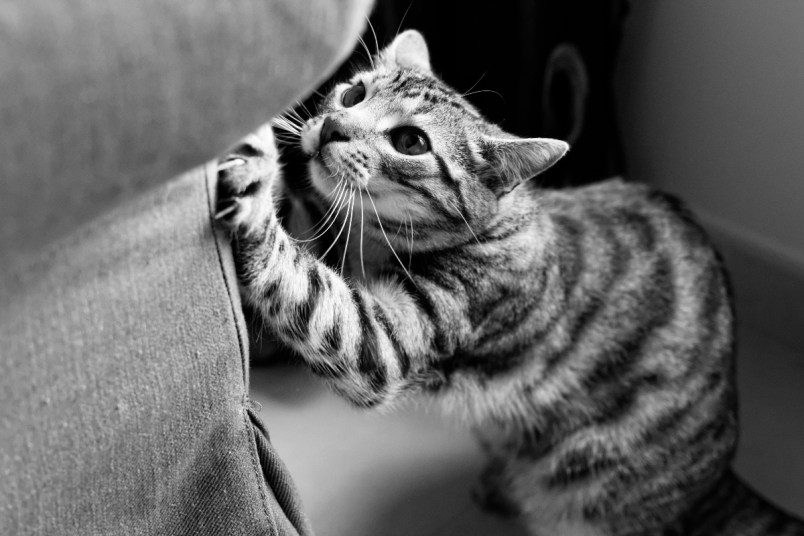Is Your Cat Acting Out? Fix Feisty Feline Behaviors This Way
Bad kitties turn good with a couple of small changes.

Cats are adorable, but they can also be trouble. Your furry feline friend may even seem to take pleasure in destroying your household items. But kitties don’t realize the damage their playtimes may be causing. To help, here are three tips to prevent bad cat behaviors like toilet paper shredding, furniture scratching, and cord chewing. Your cat will be grateful when you stop scolding him and start cuddling!
Stop ‘TP’ shredding with citrus oil
The white “confetti” all over the bathroom floor means only one thing: Fluffy’s been playing with the toilet paper again. To prevent this from happening in the future, place a few drops of orange or lemon essential oil in the cardboard center of the toilet-paper roll. Cats generally dislike the scent of citrus, so your sweetie will steer clear. (Caution: Keep essential-oil bottles out of cats’ reach.) Click through for an explanation of another odd behavior: pulling hair out.)
Keep a cat from clawing furniture with a click trick
Ugh! Muffin’s scratching is ruining your favorite chair! The fix: Place a scratching post near the chair. When he shows interest in the post, push down on a clickable pen once and give him a treat (the click signals the moment he’s doing something right, helping him hardwire the new habit). Repeat anytime he scratches the post, and he’ll learn the behavior leads to a reward — saving your chair!
Prevent cats from gnawing on cords with bubble wrap
Your pal likes to chew on electrical cords behind the TV and under your desk. Put a stop to these antics with bubble wrap. Simply cut a sheet of bubble wrap into 2″-wide strips and tape them over exposed cords. When she tries to bite through the wrap, the loud pop will scare her away and she’ll keep her distance for good.
A version of this article originally appeared in our print magazine, Woman’s World.












